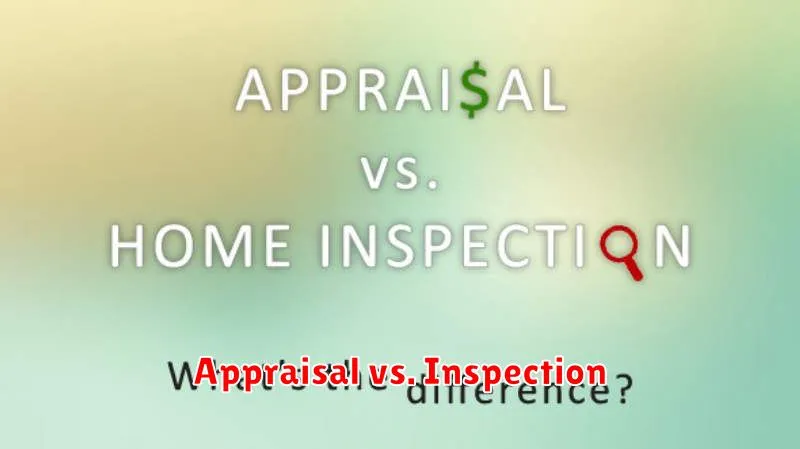Navigating the real estate market can feel overwhelming, especially for first-time home buyers. Understanding key real estate terms is crucial for making informed decisions and confidently navigating the complexities of buying a home. This comprehensive guide will equip you with the essential real estate vocabulary you need to successfully navigate the home buying process, from mortgage pre-approval to closing day and beyond. Whether you’re a seasoned investor or just beginning your real estate journey, mastering these real estate terms will empower you every step of the way. Learn the lingo, understand the process, and buy your dream home with confidence.
This guide to real estate terms covers everything from common terms like “closing costs” and “escrow” to more complex concepts such as “appraisal” and “title insurance.” By understanding these real estate definitions, you’ll be able to communicate effectively with real estate agents, lenders, and other professionals involved in the home buying process. We’ll break down the jargon into easy-to-understand explanations, providing clear real estate term definitions that will help you feel confident and in control throughout your real estate transaction. Prepare yourself to become a savvy home buyer with a solid understanding of the real estate terms that matter most.
Understanding Key Financial Terms
Assets represent anything a company owns that holds value, including tangible items like cash, equipment, and real estate, as well as intangible assets such as patents and copyrights. Liabilities, conversely, represent a company’s financial obligations or debts. Understanding the relationship between assets and liabilities is crucial for assessing a company’s financial health. The difference between assets and liabilities is known as equity, which represents the owner’s stake in the company.
Revenue refers to the total income generated from a company’s core business operations, primarily through sales of goods or services. Profit, also known as net income, represents the amount of money remaining after deducting all expenses, including the cost of goods sold, operating expenses, and taxes, from revenue. While revenue signifies the top line of the income statement, profit represents the bottom line, reflecting the company’s overall profitability.
Cash flow represents the net amount of cash and cash equivalents being transferred into and out of a business. Positive cash flow indicates more money coming in than going out, while negative cash flow suggests the opposite. Analyzing cash flow provides insights into a company’s liquidity and its ability to meet its short-term obligations. Budgeting is the process of creating a plan for how to spend money. It involves estimating income and expenses over a specific period, allowing individuals and businesses to track their financial performance and make informed financial decisions.
Legal Jargon Explained Simply
Legal jargon can be intimidating, often filled with complex terms and phrases that are difficult for the average person to understand. This specialized language, while necessary for legal professionals, often creates a barrier between the law and those it affects. Understanding key legal terms is crucial for navigating legal documents, court proceedings, and everyday interactions with the legal system. This guide aims to simplify some common legal jargon, empowering individuals to better comprehend their rights and responsibilities.
Some frequently encountered legal terms include affidavit (a sworn written statement), liability (legal responsibility for one’s actions), negligence (failure to exercise reasonable care), and jurisdiction (the authority of a court to hear a case). Due process, a fundamental legal principle, guarantees fair treatment by the legal system, ensuring that all individuals have the right to a fair trial and legal representation. These are just a few examples of the many complex terms used in legal settings.
By demystifying legal jargon, we can empower individuals to actively participate in legal processes. This understanding fosters greater transparency and accessibility within the legal system, ensuring that everyone can comprehend and engage with their legal rights and obligations effectively.
Common Mortgage Terms

Understanding key mortgage terminology is crucial for navigating the home-buying process. Principal refers to the original loan amount borrowed. Interest is the cost of borrowing that principal, expressed as a percentage rate. Your monthly payment typically includes principal, interest, property taxes, and homeowners insurance. Escrow is an account managed by the lender to pay these taxes and insurance. Amortization is the process of gradually paying down the loan balance over time, with each payment contributing more towards the principal and less towards interest as the loan matures. A fixed-rate mortgage locks in your interest rate for the entire loan term, providing payment predictability. An adjustable-rate mortgage (ARM) has an interest rate that can fluctuate periodically, impacting your monthly payments.
Loan-to-value ratio (LTV) represents the percentage of the home’s value that you are financing. A higher LTV typically means a higher interest rate and may require private mortgage insurance (PMI). Points, also known as discount points, are prepaid interest that can lower your interest rate. One point equals 1% of the loan amount. Closing costs encompass various fees associated with finalizing the mortgage, such as appraisal fees, title insurance, and lender fees. It’s important to carefully review these costs before closing.
Finally, consider the different loan terms available, such as 15-year and 30-year mortgages. A shorter loan term results in higher monthly payments but significantly less interest paid over the life of the loan. A longer loan term lowers monthly payments but increases the total interest paid. Choosing the right loan term depends on your individual financial situation and goals.
What Does Escrow Mean?

Escrow is a legal arrangement where a third party temporarily holds assets or money on behalf of two other parties involved in a transaction. This neutral third party, the escrow agent, holds the assets until predetermined conditions of the agreement are met. Escrow protects both the buyer and seller by ensuring that funds and assets are exchanged only after all obligations have been fulfilled.
Common uses of escrow include real estate transactions, where the escrow agent holds the buyer’s down payment until the sale closes and all contingencies are satisfied. It is also frequently used in online sales, particularly for high-value items, to ensure the buyer receives the goods as described and the seller receives payment. Other applications include mergers and acquisitions, domain name transfers, and the exchange of sensitive documents.
The escrow process typically involves establishing the escrow agreement, depositing funds and/or assets into the escrow account, verifying the fulfillment of the agreement’s conditions, and finally, releasing the funds or assets to the appropriate party upon successful completion. The escrow agent plays a crucial role in ensuring a secure and impartial transaction process.
Appraisal vs. Inspection

An appraisal and a home inspection are both important parts of the real estate process, but they serve very different purposes. An appraisal is a professional assessment of a property’s market value. Lenders require appraisals to ensure the loan amount doesn’t exceed the property’s worth. Appraisers consider factors like location, size, condition, and recent sales of comparable properties.
A home inspection, on the other hand, assesses the physical condition of the property. A qualified inspector examines the home’s structure, systems (like plumbing, electrical, and HVAC), and looks for potential problems. The inspection report provides buyers with valuable information about the property’s condition and can be used to negotiate repairs or credits with the seller. While an appraisal protects the lender, an inspection protects the buyer.
In short, appraisals determine value, while inspections determine condition. Both are crucial steps toward a successful real estate transaction.
Title Insurance and Why It Matters
Title insurance protects you from financial loss due to defects in a property’s title. When you buy a home, you receive a title, which is a legal document proving your ownership. However, sometimes hidden title problems can emerge later, such as unpaid liens, errors in public records, or unknown heirs claiming ownership. These issues can threaten your ownership and cost you significant money to resolve. Title insurance safeguards you from these risks by covering the legal costs associated with defending your title and compensating you for any financial losses incurred.
There are two main types of title insurance: lender’s and owner’s. Lender’s title insurance is typically required by mortgage lenders and protects their investment in the property. It covers the loan amount and becomes less valuable as the loan is paid off. Owner’s title insurance is optional but highly recommended. It protects your investment in the property and remains in effect as long as you or your heirs own the property. This provides long-term protection against any future title issues that may arise.
While title insurance is an added expense, it is a small price to pay for the peace of mind it provides. Consider it a worthwhile investment that protects one of your most significant assets. By understanding the importance of title insurance, you can make an informed decision and ensure your property ownership is secure.
Contract Clauses to Pay Attention To
When reviewing a contract, pay close attention to key clauses that can significantly impact your rights and obligations. These include the payment terms, outlining when and how payments are to be made, and the termination clause, specifying under what conditions the contract can be ended. Thoroughly understanding these clauses is crucial to avoid future disputes.
Another important set of clauses relates to liability and warranties. Liability clauses define who is responsible for what in case something goes wrong, while warranty clauses guarantee the quality or performance of goods or services. Carefully examine these clauses to understand the potential risks and protections offered.
Finally, don’t overlook clauses related to dispute resolution. These clauses determine how disagreements will be handled, whether through negotiation, mediation, or arbitration. Understanding these mechanisms upfront can save you time and money in the event of a conflict. Be sure to also carefully review the governing law clause, which dictates which jurisdiction’s laws will be applied to interpret the contract.

